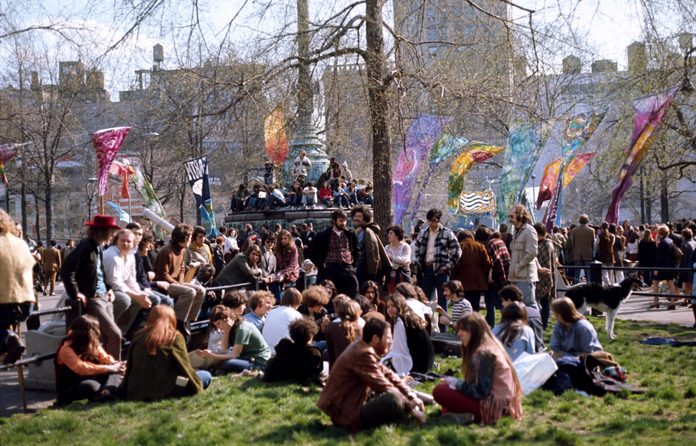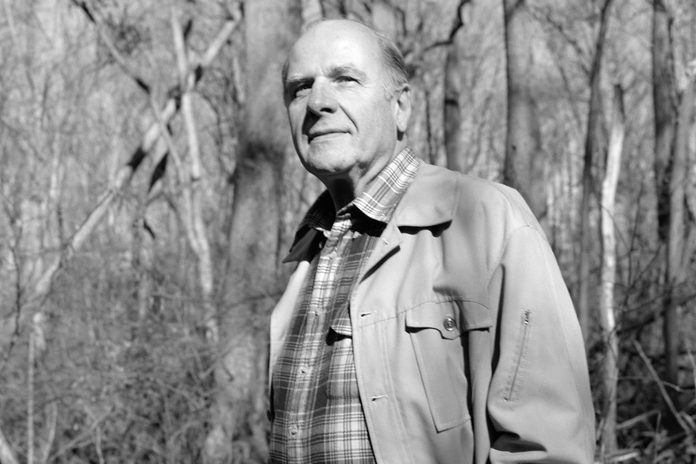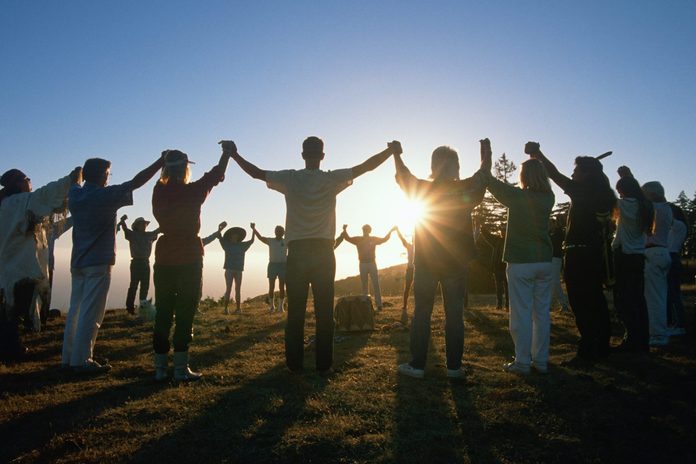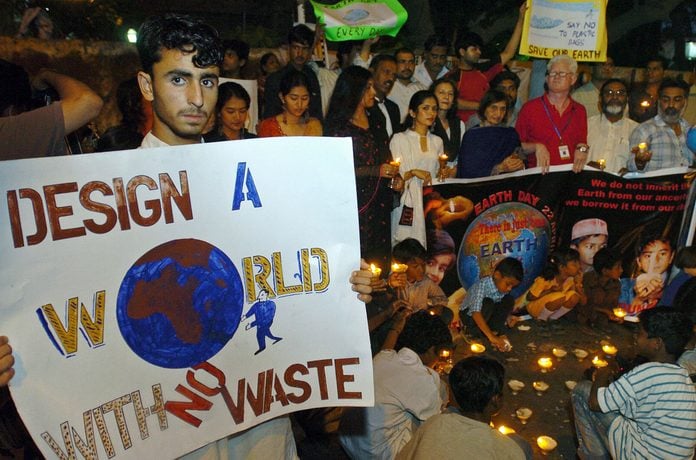How Many Days Does It Take for the Moon to Orbit the Earth
14 Earth Day Facts You Should Know
Our planet is in peril—and it's an Earth Day fact that this day was created 51 years ago to raise awareness about the importance of taking action now.
Every editorial product is independently selected, though we may be compensated or receive an affiliate commission if you buy something through our links. Ratings and prices are accurate and items are in stock as of time of publication.
 Santi Visalli/Getty Images
Santi Visalli/Getty Images
The very first Earth Day
Earth Day first came into being on April 22, 1970, followed in 1972 by World Environment Day. It has been celebrated ever since, slowly but surely picking up steam as more and more people have recognized the importance of taking care of the earth.
 MANAN VATSYAYANA/Getty Images
MANAN VATSYAYANA/Getty Images
Earth Day is now a global event
Earth Day remained a grassroots affair for 20 years, before going global and spreading out to 140 countries in 1990. It's now celebrated in over 190 countries, with an estimated 1 billion people the world over participating each year. These important Earth Day facts along with these Earth Day quotes will motivate you to do your part.
 Janet Fries/Getty Images
Janet Fries/Getty Images
Earth Day was the brainchild of Wisconsin Governor Gaylord Nelson
Gaylord Nelson, a two-term governor of Wisconsin (1958 to 1962), was responsible for focusing his state's environmental policy, establishing a single Department of Resource Development, a Youth Conservation Corps, and setting aside $50 million to buy land and convert it to parks and wilderness areas during the years he was in office. This earned him the nickname "Conservation Governor." Nelson was then elected a U.S. senator, where he became known as a champion for the earth, asserting that "Environment is all of America and its problems. It is rats in the ghetto. It is a hungry child in a land of affluence. It is housing not worthy of the name; neighborhoods not fit to inhabit." Test your eco-smarts with our Earth Day quiz.
 Millard Smith/Getty Images
Millard Smith/Getty Images
Earth Day started as a teach-in for the environment
Frustrated by a lack of support for environmental policy among his fellow senators, but inspired by the various youth movements of the '60s that were pushing hard for meaningful societal change, Nelson devised the idea of a teach-in for the environment in 1969. The plan was to drum up public support for the nascent environmental movement, with an eye toward engendering the political will to make change. Nelson's idea was so popular that he had to hire an 85-person team to get the first Earth Day off the ground.
 American Stock Archive/Getty Images
American Stock Archive/Getty Images
Even back in the 1950s and 1960s, the world needed Earth Day
We may think of man-made climate change as a recent development, but it's a critical Earth Day fact: Even decades ago, the country was a polluted place in need of help. Public lands were dilapidated, factories were free to dump toxins into our waters, and industries could churn out pollutants into our air without regulation. As a result, species began collapsing—oysters, for example, were gone from New York Harbor by the early 20th century. Around the time of the first Earth Day in 1970, people were starting to realize that pollution and toxic waste could lead to cancer and other serious health issues.
 Bettmann/Getty Images
Bettmann/Getty Images
10 percent of the U.S. population celebrated the first Earth Day
Nelson chose this date in the third week of April to appeal to his core demographic—students—and April 22 fell between their spring break and final exams. Enormous, inspirational, rallies were held all over the country, with 20 million people—10 percent of the U.S. population at that time—taking to the streets. These 50 powerful photos prove the Earth still needs our help.
 Bill Clark/Getty Images
Bill Clark/Getty Images
The first Earth Day spurred immediate action
The impact of that first Earth Day was immediate and profound; by December of 1970, President Richard Nixon had established the Environmental Protection Agency and the Clean Air Act was devised and passed that year. Swiftly on their heels came the Clean Water Act, the Endangered Species Act, the Resource Conservation and Recovery Act, the Federal Environmental Pesticide Control Act, and the Federal Land Policy and Management Act, among other critical pieces of legislation.
 Joe Sohm/Visions of America/Getty Images
Joe Sohm/Visions of America/Getty Images
Earth Day went global in 1990
On the occasion of its 20th birthday in 1990, Earth Day's organizers decided the time had come to take the movement global— 200 million people in 141 countries participated. The impacts of that day were enormous: it kicked off massive initiatives to recycle and paved the way for the 1992 United Nations Earth Summit in Rio de Janeiro. Check out these at-home Earth Day activities for kids you can arrange this year.
 Chris Hondros/Getty Images
Chris Hondros/Getty Images
The United Nations joined the celebration in 2000
By the time of Earth Day's 30th anniversary, coinciding with a brand new millennium, Earth Day was being announced by the United Nations. "At the end of the 20th and the dawn of the 21st century, the human species had entered a new era where the nature of the entire planet was being fundamentally changed," the international organization said in a statement about the day. "Humankind was facing epidemics, massive holes in the ozone layer, and the change in global climate. In that context, it was necessary to have an informed citizenry, which would take a leadership role in pulling the political and economic forces in the right direction. It was time for a formidable shift, both at high and low levels. In the year 2000, a decision had been made to focus on energy and climate change."
 EDUARD MUZHEVSKYI/SCIENCE PHOTO LIBRARY/Getty Images
EDUARD MUZHEVSKYI/SCIENCE PHOTO LIBRARY/Getty Images
Earth Day goes virtual
The year 2000 also marked the era when the Internet helped spread the message of the need for strong environmental policy far and wide. Being virtually connected allowed 5,000 environmental groups to find each other and coordinate their messaging. It allowed people from 184 countries to join in marches and demonstrations and acts of organizing.
 PeopleImages/Getty Images
PeopleImages/Getty Images
Each year's celebration has a theme
In 2016, the theme of Earth Day was "Trees for the Earth" with the goal of planting 7.8 million trees in time for Earth Day's 50th anniversary in 2020. Here's the big difference between weather and climate (and 10 other nature words everyone gets wrong).
 Paul Morigi/Getty Images
Paul Morigi/Getty Images
Scientists lend their voices and support
Although the March for Science began as its own separate movement in February 2017, by April of that year, it joined Earth Day marches and celebrations in Washington, D.C., and 360 other cities. While the group's aims of protecting science from "manipulation by special interests," and opposing policies that "threaten to further restrict scientists' ability to research and communicate their findings" are not solely related to the health of the Earth, they do go hand in hand with supporting environmentalists and earth scientists. Learn the difference between climate change and global warming.
 RIZWAN TABASSUM/Getty Images
RIZWAN TABASSUM/Getty Images
Earth Day is still a grass-roots movement
While yes, Earth Day has become a global phenomenon, it still counts on local initiatives to demonstrate the power of change on a smaller but still-critical level. A few examples: In 2015, Tanzania led efforts to protect the Usambara Mountains, including teaching residents about how to conserve water, while in Puerto Rico, celebrations centered around the establishment of a new eco-park and an initiative began to keep the island trash free for 100 days. Learn more about Kenya's strict ban on plastic bags.
 JAY DIRECTO/Getty Images
JAY DIRECTO/Getty Images
There's still a lot of work that needs to be done
As Earth Day's founding organization reports, all this interest and action has not been without its counterpoint from climate change deniers, lobbyists, politicians, and more. Despite the challenges, it's an Earth Day fact that the day is considered "the largest secular observance in the world." That is no small feat and, although corporate interests continue to plague meaningful efforts at policy change to make the world more livable, the fact that by 2010 Earth Day had coordinated with 75,000 global partners—and that number has only grown since then—is cause for celebration. Find out 10 things the U.S. doesn't recycle but other countries do.
 Jeff Pudlinski/500px/Getty Images
Jeff Pudlinski/500px/Getty Images
The theme of Earth Day 2021 is…
The theme for this year's Earth Day is "Restore the Earth." It's dedicated to focusing on "natural processes, emerging green technologies, and innovative thinking that can restore the world's ecosystems," reports EarthDay.org. These countries are replacing plastic in the most brilliant ways.
Originally Published: March 30, 2021
Sign up for articles sent right to your inbox
Enjoy the best stories, advice & jokes delivered right to your inbox!

Subscribe & SAVE Save Up To 84%!
How Many Days Does It Take for the Moon to Orbit the Earth
Source: https://www.rd.com/list/earth-day-statistics/